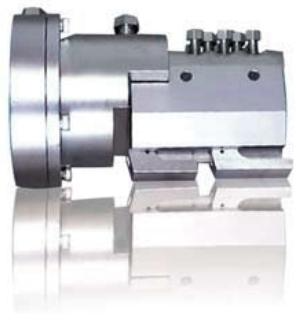Product positioning and development history
Background: ABB launched the world’s first online process gas chromatograph in 1957, which was upgraded to PGC2000 series version two (E2) in the early 21st century. As the second generation product of Vista 2000, it set new standards in performance, reliability, and operability.
Model classification: including 9 models such as basic type, process distillation analyzer, PNA analyzer, and program-controlled temperature chromatograph, covering scenarios such as petrochemical and fuel analysis.
Core Technology and Reliability Design
Hardware Architecture
Controller: Industrial microprocessor using real-time embedded operating system to ensure real-time data processing and system recovery capability.
Column box and gas path: precise temperature control of air bath analysis column box to improve chromatographic separation efficiency; PFA Teflon ® Enhance flexibility of pipelines and reduce maintenance; The liquid/gas injection valve is compatible with different samples.

Analysis valve:
791 micro liquid sampling valve: resistant to high pressure (197.28 KPI), high temperature (200 ℃), integrated vaporizer and passivation device.
M2CP sliding plate valve: automatic wear compensation, low maintenance cost, supports packed column/capillary column.
DV-22 diaphragm valve: suitable for fast column cutting technology, capable of withstanding 300 PSI pressure.
Chromatographic column technology
Core components, using high surface area support and high-purity fixative to ensure separation efficiency; Optional packed column, micro packed column, capillary column, suitable for different analysis needs.
Performance and detection capability
control function
Electronic Pressure Control (EPC): 5 independent control zones, resistant to environmental interference, supporting program voltage transformation.
Digital Temperature Control (DTC): 5 temperature zones, supports program temperature variation, with higher accuracy than analog controllers.

Detector Type
Thermal conductivity detector (TCD): universal type, measuring range covering volume/mole/weight percentage, supporting low ppm measurement.
Flame ionization detector (FID): high sensitivity, suitable for ppm/ppb level hydrocarbons, automatic ignition and shutdown alarm.
Flame photometric detector (FPD): sulfur selective detection, sensitivity increased by 200 times compared to conventional, PMT thermoelectric cooling reduces noise.
New detectors: dielectric barrier discharge ionization detector (DBDD) and photoionization detector (PID), designed for ppb level measurement of high-purity gas impurities, halogenated hydrocarbons, etc.
Usability and software functionality
Operation interface
LCD graphical interface, 50 key touchpad, supports multilingual menus and local help, can store data such as chromatograms and calibration values.
VistaNET 2.0 Network: Remote control of all front panel functions, supporting data sharing and DCS integration.
FUNCTION
VistaBASIC language: Customized applications such as sampling system monitoring and calorific value calculation, replacing PLC to implement complex logic.
Statistical Quality Control (SQC): Monitor peak area, baseline noise, and other parameters to generate reports.
Interface and Scalability
Input/output signal
Analog output: 32 channels of 4-20mA current signals, 96 channels of voltage signals, supporting component trend recording.
Digital output: 32 remote flow control channels, 96 concentration alarm channels, compatible with RS232 and DCS communication.
Certification and Compatibility
Complies with international standards such as CSA/NRTL, ATEX/EMC, IEC Ex, supports “Division 2” certification upgrades, and is suitable for hazardous area applications.
Maintenance and Support
Maintain design
Integrated baseboard reduces wiring harness, subsystem identification is clear, supports power-off recovery and fault self diagnosis.
Text alarm and comprehensive fault diagnosis menu to improve maintenance efficiency.
Service system
The ABB certification service team provides three-level support (on-site, expert, manufacturer), regularly trains service personnel, and ensures global after-sales response.
Application Fields
Widely used in industries such as petrochemicals, chemicals, and energy, it meets the 24-hour continuous operation requirements for scenarios such as hydrocarbon separation, sulfur content analysis, and olefin detection through customized chromatographic columns and detector configurations.



Leave a comment
Your email address will not be published. Required fields are marked *